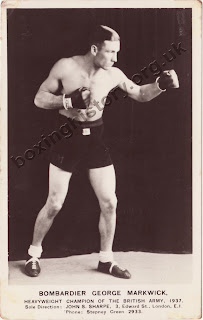
In 2012 boxing historian and collector Larry Braysher
produced a neat little book on the history of boxing in Morecambe entitled
‘Boxing by the Sea’. Copies of this
informative book are still available directly from the author.
To complete his historical overview of boxing in the area Larry has now written a second volume which covers boxing and boxers from the local communities of the area around Morecambe bay, particularly Lancaster but also including Heysham and the other small towns and villages that produced such good fighters throughout the twentieth century.
Every facet of the sport is included in this journey through
the decades with anecdotes, amusing stories and reminiscences to enhance the
wealth of statistical information on boxers from the area.



